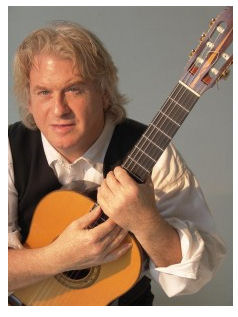Often players, knowingly or not, limit the range of motion when playing the classical guitar. The ‘Minimum Movement’ movement has propagated this idea. The idea being if you can stay close to the string you’ll be able to player faster, that less movement means less exertion. But this couldn’t be further from the truth. A proper range of motion, being bio mechanically correct, allows for a relaxed movement and better tone production.
The following video is an excerpt of a lesson with student Nigel Stadick, working on Prelude from J.S. Bach’s 1st Cello Suite.
I’m quoting here from my Phase I – Free Stroke
Prevalent in my early studies was the concept of ‘minimum motion’. The theory went like this; the more my finger moves the farther it is from the string which slows my response time to get to the next note. A shorter motion keeps the finger poised to play. This may sound good in theory but it’s mechanically unsound. If a finger is stopped from moving within the optimal range of motion it done so by employing the opposing muscle group. In other words if I flex my index finger but stop its motion before the sarcomeres are exhausted (while those fibers are fully overlapped) I do so by contracting the opposing muscles, the extensors. The near simultaneous contracting of the extensor and flexor muscle causes hand tension. (Remember the analogy of breaking and accelerating your car simultaneously). In the short term this causes tension and in some extreme causes the hand to shake. Over the long term it can cause a mechanical breakdown. So if one keeps employing this minimum movement one wil experience unwanted tension which causes errors, errors cause us to tighten the stroke even further, which causes more errors, tension, and eventually erratic playing. I know this as for years while I employed the principles I teach here in my technique practice I never really applied them to repertoire, assuming they would assimilate. When playing concerts I would noticed that my hand would become more and more tense and it wasn’t until I watched my hand in detail that I found I was minimizing my motion, in effect, negating the technical advances I had made in my technique work. I can’t tell you how deflated I was. I began the concept that we’ll get to later in this Phase called Right Hand Mapping where we integrate the primary motions into repertoire.
Flexed position is when the finger aligns with the first knuckle of the P, extended position is when the finger aligns flush with the tip of P. Both positions consitute Range of Motion and adhere to the natural range for the classical guitarist.







Excellent definitions for flexed and extended positions!
Thanks Ron. I really feel that, through retracing Aaron Shearer’s research, I’ve discovered some amazing physiology that actually makes playing classical guitar easier. My performing, for instance, is at the highest level of my career. This of course also has to do with practice techniques but the movement and positioning of the hands need to be perfected for this to take place! Exciting. Thanks again for your comments. Keep checking back – I’ll be publishing much of my method here soon!
Scott